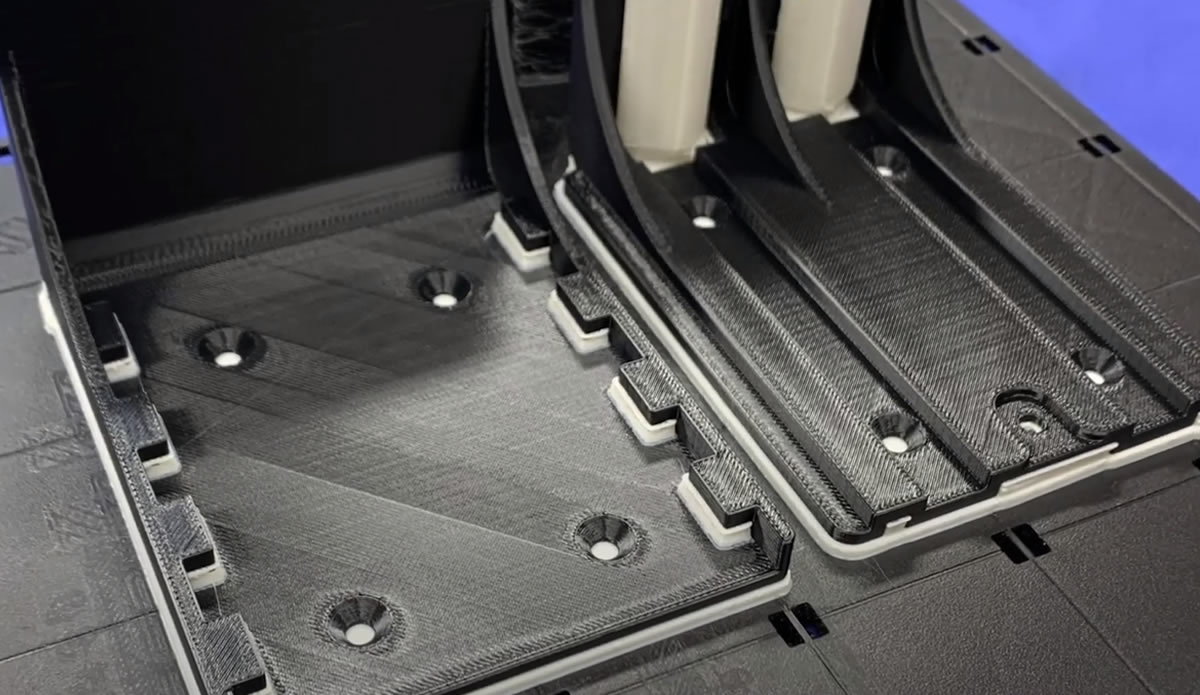3D polimer printing
The 3D printer is a device capable of creating objects from digital models, where our object is been built up layers by layers. During printing process the machine reads data of the model and forms overlapping layers over each other, therefore building gradually up the model from sections. These layers are bonded together or automatically adhered to each other.
The additive manufacturing process is preceded by the creation of a digital model. This can be done either by using a computer-aided design (CAD) or a 3D modeling software. Digital model also can be created of an existing body by using a 3D scanner.
Generally we can say that 3D printing shows up in more and more areas of our everyday life. It can be found in a wide variety of industrial sectors almost without exceptions. It is becoming more and more common for home and hobby usage too.
When and how can we help, why is it worth to choose us? If we can negotiate during the design process, we can draw your attention to important aspects that can affect both the price and the quality of the final product. fiber drawing and liquid technology offer wide variety of raw materials that can highly affect the appearance, feel and function of the printed product. It is difficult to navigate among various polymers, s and in the absence of experience it seems an impossible task. Tell us your requirements and expectations, and we will suggest raw material. It is not just our best interest to reduce printing time. We can recommend machine and technology to meet your expectations, thus reducing both printing time and price. It is everyone's interest to choose the optimal procedure.
FDM technology
FDM (Fused Deposition Modelling) and FFF (Fused Filament Fabrication) are one of the most commonly known printing procedures. Thermoplastic polymer fiber (filament) gets into the machine during fiber drawing technology, that gets melt, therefore model can be created layer by layer. FDM raw materials: PLA, ABS, ASA, PA-Nylon, PET/PET-G, TPU/TPE, PC-ABS.
Polyjet technology
Polyjet is a 3-dimensional printing process using UV-light for curing acrylic-based epoxy resin (photopolymer). It is similar to the SLA procedure, but here, instead of laser, the raw material solidification takes place by means of a light source radiating in UV range. Polyjet raw materials by application areas: prototype/design, functional purpose, biocompatible material.
Polyjet technology
Selective Laser Sintering (SLS) is an additive manufacturing process that belongs to the powder bed fusion family. In SLS 3D printing, a laser selectively sinters the particles of a polymer powder, fusing them together and building a part, layer by layer. The materials used in SLS are thermoplastic polymers that come in a granular form.
SLS is a versatile solution, especially if you want to hold off on injection molding and its high startup costs. It's definitely more cost-efficient for producing high-quality components in reasonable amounts (less than 1000 products) or to test the products before making expensive molds and tools.
SLS is a great solution for the rapid prototyping of functional polymers because it offers a very high degree of design freedom and high accuracy.
SLS row materials: PA11 & PA 12 & PA12-GF materials for SLS printing.
Download Polymer Printing presentation
3D metal printing
SLM (Selective Laser Melting) metal printers spread a thin layer of powder evenly on the construction tray and melt the areas in the powder layer corresponding to the cross-section of the model to be printed.
Our Matsuura LUMEX Avance 25 is one of the most advanced hybrid SLM 3D metal printers available on the market. It is both a laser metal sintering and a high-speed machining center. The metal powder is melted by a high power laser beam.
The printer is mainly popular amongst rapid prototyping companies, but Matsuura's future-proof technological innovations can be used in many other areas as well.
The technology makes real professional injection molding tool optimization a reality. Really complicated geometries, shape-following cooling circuits that cannot be created with traditional cutting technologies can now be created, and the printing of deep grooves can be carried out without EDM. In addition, metal printing has many other advantages.


